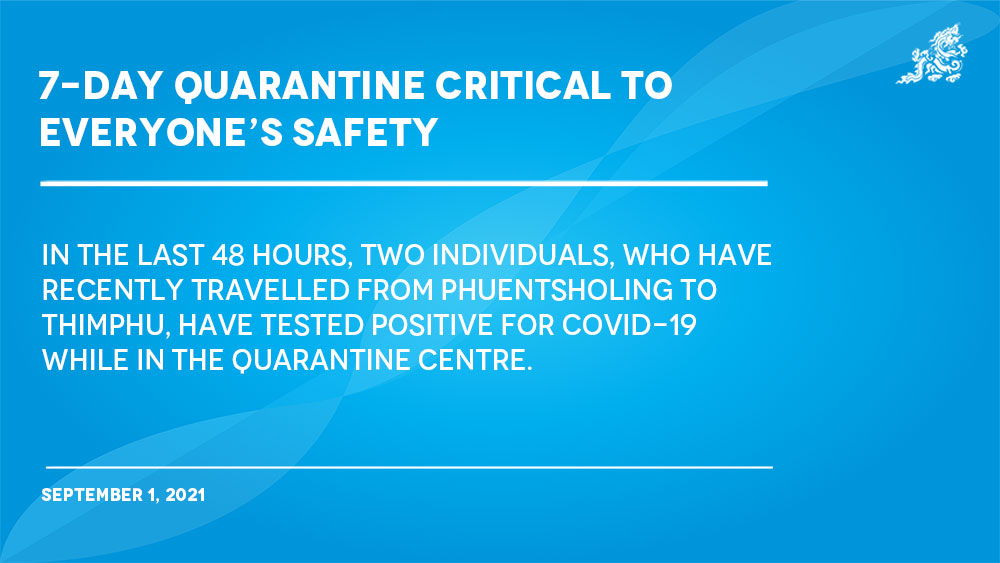Younten Tshedup
In the last 48 hours, two individuals, who have recently travelled from Phuentsholing to Thimphu, have tested positive for Covid-19 while in the quarantine centre.
This comes at a time when the government is under pressure to lift the seven-day mandatory quarantine protocol as the situation along the border improves.
With no community cases in Phuentsholing and Samtse — the two Covid-19 hotspots in the country — for the last two weeks, the government on Monday announced major relaxations in the existing Covid-19 protocols. Beginning yesterday, the 21-day mandatory quarantine period was reduced to 14 days for people entering the country with proof of being fully vaccinated.
In light of the above changes, many questioned the rationale behind not lifting the seven-day quarantine protocol.
Why the seven-day quarantine?
The seven-day quarantine was first implemented as part of the unlocking phase in September 2020 after the first nationwide lockdown. Even in the past, many people who have travelled from high-risk areas to lower-risk areas have tested positive while in quarantine.
The recent case of a 39-
A member of the Technical Advisory Group (TAG) Dr Sonam Wangchuk said that for early detection, any individual travelling out of Phuentsholing is first tested and then allowed to enter the quarantine.
In the case of the 39-year-old, Dr Sonam Wangchuk said that the man was negative when he entered the quarantine facility. “It seems like he picked up the virus during the Phuentsholing outbreak. He however, did not have any symptoms before and even during his stay in the quarantine.”
However, a day before he was released from the quarantine, the routine test on the seventh day detected him as positive. Observers say, if it wasn’t for the quarantine, the man would have infected people in Thimphu triggering an outbreak in the capital.
The 14-year-old student who tested positive yesterday was also asymptomatic when he tested positive towards the end of his quarantine period.
Dr Sonam Wangchuk said that although Phuentsholing and Samtse had not reported any community cases for more than two weeks, it was technically impossible for the health officials to declare these places free of infection. “This is mainly because of the long porous border. Although the majority of the people there follow the protocols, there can be exceptions.”
He said that unlike in the past the Delta variant of SARS-CoV-2 virus was highly transmissible. He said that the initial strain of the virus from Wuhan required at least 15 minutes of close contact interaction with an infected individual for it to spread.
“Now with the Delta variant, a brief close contact with an infected person can spread the infection. This is how transmissible the virus has become,” he said.
Dr Sonam Wangchuk cautioned that even with the seven-day protocol there were possibilities of people with virus escaping into the community given the changing nature of the virus. “But seven days is the minimum threshold where we should be able to detect the majority of the infected individuals.”
He said: “For the rest of the country to function normally, we will need this protocol in place. Technically, it is justifiable to keep the seven-day quarantine or else we’ll see more outbreaks and lockdowns in places other than Phuentsholing and Samtse.”
Edited by Tshering Palden


